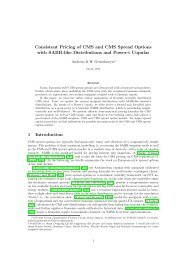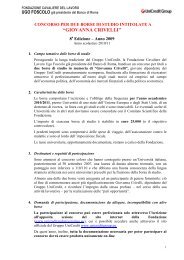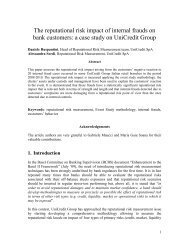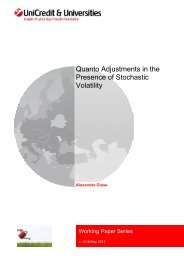Dóra Fazekas Carbon Market Implications for new EU - UniCredit ...
Dóra Fazekas Carbon Market Implications for new EU - UniCredit ...
Dóra Fazekas Carbon Market Implications for new EU - UniCredit ...
Create successful ePaper yourself
Turn your PDF publications into a flip-book with our unique Google optimized e-Paper software.
3. The Operation of the <strong>EU</strong> ETS in Hungary<br />
This chapter will present an overview of Hungarian participants and the positions of the various<br />
sectors. In Hungary, most of the sectors and most companies possessed a surplus during the pilot<br />
phase, and did not have to struggle to fulfill their obligations. This chapter will examine the<br />
concentration of the market and the allocation of allowances among sectors and company groups.<br />
Hungarian companies’ approach to the scheme will be presented through the author’s personal<br />
discussions, with the conclusion that most obligated companies perceived the system essentially as<br />
an administrative burden. Later, the effects of the scheme on Hungarian sectors will be examined,<br />
with a special focus on its impact on motivating innovation, competitiveness and corporate<br />
behavior. Transaction costs will be analyzed, as will effects on operative and investment decisions.<br />
Lacking reliable preliminary data, it is difficult to quantify whether emissions reductions actually<br />
occurred in Hungary during the pilot phase. The chapter will also offer a comparison of allocation<br />
data with verified emissions quantities, and will show the surplus that Hungarian sectors possessed.<br />
The final part of the chapter will examine the activity of the Hungarian carbon market, quantifying<br />
Hungarian and international trade activity.<br />
3.1. An Overview of the Hungarian <strong>EU</strong> ETS <strong>Market</strong><br />
The <strong>EU</strong> ETS market is a regulated one; its participants are obligated to enter into emissions trading<br />
activities by the authorities, and do not necessarily join the market simply of their own volition. In<br />
Hungary, only some one-third of all GHG emissions (32.73%, IDEA<strong>Carbon</strong>, 2008) are covered by<br />
the <strong>EU</strong> ETS market. Essentially, there is no separate Hungarian ETS market or Hungarian carbon-<br />
dioxide market, since the trading of emissions allowances is not limited to within the borders of the<br />
country: the <strong>EU</strong> ETS establishes a common market without borders, and the Hungarian segment is<br />
an integral part of this marketplace.<br />
This subchapter will review the Hungarian participants of the <strong>EU</strong> ETS, and will group them<br />
according to size and sector. The <strong>EU</strong> ETS market in Hungary is rather concentrated, both in terms<br />
of sectors and markets as well as installations. In general, Hungarian sectors tended to receive<br />
more units than would have been necessary to cover their emission amounts during the pilot phase.<br />
Fifty-two installations were facing a shortage, while 191 installations were long. The positions of<br />
the various sectors will be discussed, and relative allocations will be compared. Overall, Hungarian<br />
participants were able to rely on a surplus of 14%, which amounts to 12 Mt of CO2 emissions<br />
allowances.<br />
116









